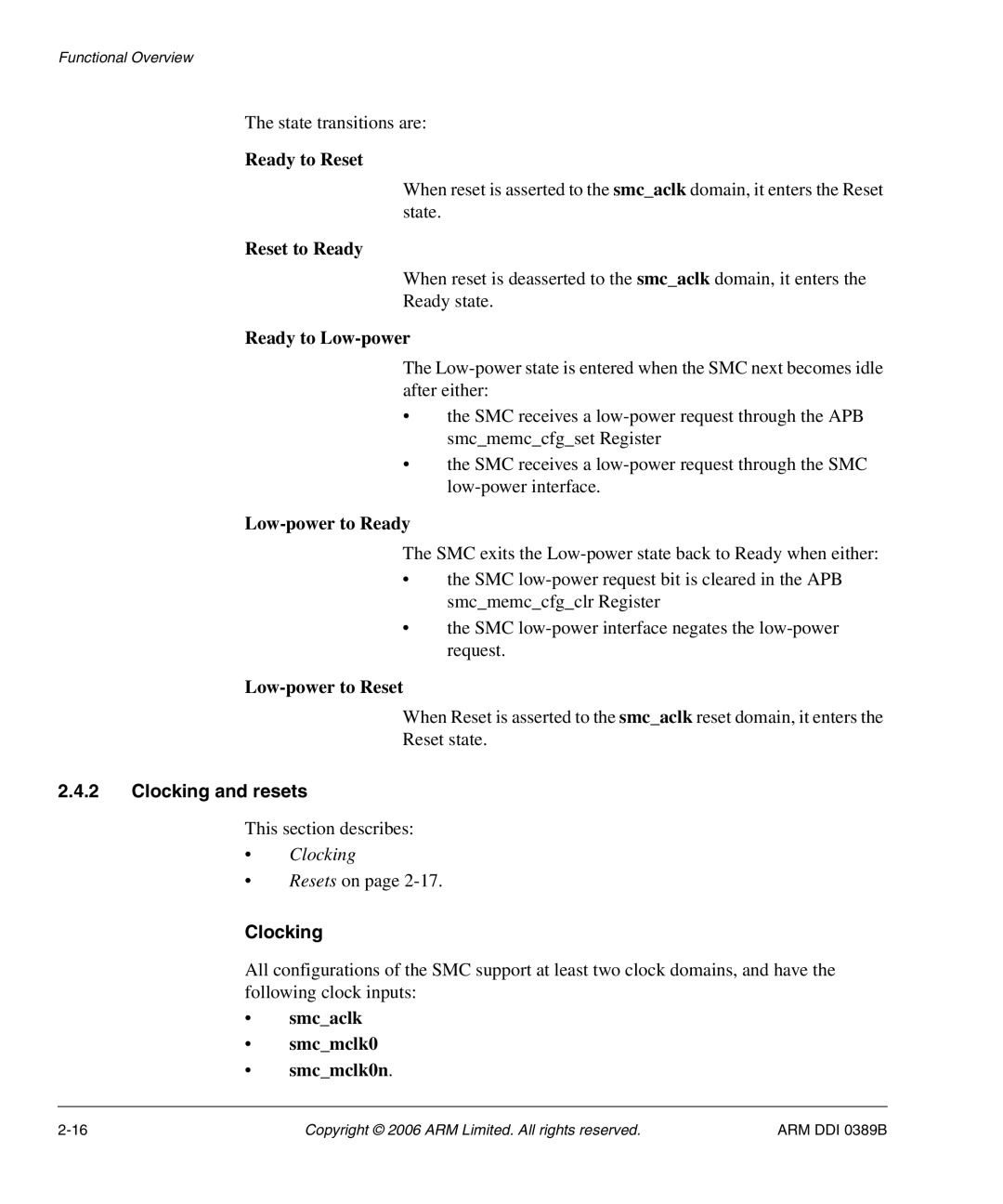Functional Overview
The state transitions are:
Ready to Reset
When reset is asserted to the smc_aclk domain, it enters the Reset state.
Reset to Ready
When reset is deasserted to the smc_aclk domain, it enters the
Ready state.
Ready to Low-power
The
•the SMC receives a
•the SMC receives a
Low-power to Ready
The SMC exits the
•the SMC
•the SMC
When Reset is asserted to the smc_aclk reset domain, it enters the
Reset state.
2.4.2Clocking and resets
This section describes:
•Clocking
•Resets on page
Clocking
All configurations of the SMC support at least two clock domains, and have the following clock inputs:
•smc_aclk
•smc_mclk0
•smc_mclk0n.
Copyright © 2006 ARM Limited. All rights reserved. | ARM DDI 0389B |
